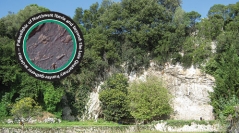

 Comptes Rendus Palevol
20 (18) - Pages 315-343
Comptes Rendus Palevol
20 (18) - Pages 315-343The Iberian Peninsula is one of the key areas for studying the last populations of Neanderthals and the arrival in Europe of the first anatomically modern humans. In the Cantabrian region, this process can be traced in just a few sites with levels dating to the final stages of the Middle Palaeolithic and the earliest phases of the Upper Palaeolithic. One of these singular enclaves is El Cuco rock-shelter, where the sequence was initially dated by 14C only to the early Upper Palaeolithic sensu lato. However, new studies and datings now place this archaeological sequence in the late Mousterian and the Aurignacian. In this article we present a chrono-cultural reassessment of the upper levels of El Cuco (III-V), including a study of the large mammals. Levels Vc and Vb (>43.5-40.5 ky uncal BP) date from the late Mousterian, whereas levels Va, IV and III (c. 36.5-30 ky uncal BP) cover an interval extending at least from the Early Aurignacian to the Evolved Aurignacian. Particularly noteworthy is the discovery in level Va of a set of decorative beads made from marine shells in a context of possible symbolic behaviour.
Mousterian, Aurignacian, Middle Palaeolithic, Upper Palaeolithic, radiocarbon chronology, Iberia